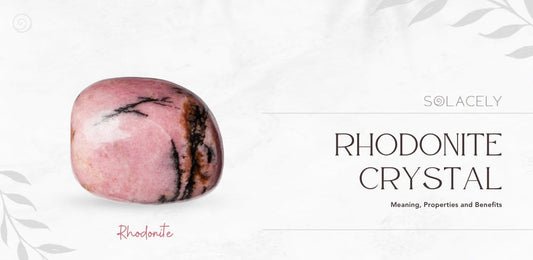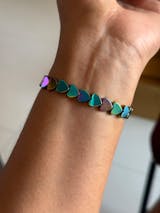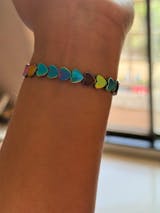Turquoise is one of the world’s oldest and most cherished gemstones. It has been valued for thousands of years, with cultures across the globe using it for protection, healing, and beauty. This blue-green stone carries a rich history, connecting people from ancient Egypt to Native American tribes and Persian royalty.
The color of turquoise ranges from sky blue to deep green, depending on where it is found. Its soft, calming shade reminds many of the sea and sky, symbolizing peace, wisdom, and balance. Unlike many gemstones, turquoise has a unique texture with natural veins, called a matrix, adding to its beauty.
Turquoise is the birthstone for December and is linked to the zodiac signs Sagittarius and Pisces. Many believe it brings luck, strength, and protection to those who wear it. Whether worn as jewelry, placed in homes, or carried as a lucky charm, turquoise remains a timeless gemstone loved by many.
The Origins and History of Turquoise
Ancient Civilizations
Turquoise has been treasured for thousands of years. Many ancient civilizations used this stone for its beauty and believed it held special powers.
- Egypt: The Egyptians used turquoise in jewelry, burial masks, and statues. Pharaohs wore it as a symbol of protection and power. The famous burial mask of King Tutankhamun had turquoise inlays.
- Persia (Iran): In ancient Persia, turquoise was seen as a sign of wealth and good fortune. People wore it to protect themselves from harm. Many mosques and palaces were decorated with turquoise tiles.
- Native American Cultures: Many Native American tribes, especially the Navajo and Apache, believed turquoise connected the earth and sky. They used it in jewelry, weapons, and spiritual ceremonies. Warriors carried turquoise for protection in battle.
- China: Chinese artisans used turquoise in carvings and jewelry for thousands of years. It was often given as a gift to bring happiness and success.
Etymology
The word “turquoise” comes from the French word “turques”, which means “Turkish”. This is because traders brought the stone to Europe through Turkey. The name stuck, even though most turquoise came from Persia and other regions.
Historical Uses
Turquoise was used in many ways across cultures:
- Jewelry: People wore turquoise in rings, necklaces, and bracelets to bring good luck and protection.
- Amulets: Many believed turquoise had healing and protective powers. It was often worn as a charm or set into armor.
- Ceremonial Artifacts: Kings and spiritual leaders decorated their crowns, masks, and temples with turquoise. Some cultures buried their dead with turquoise to guide them in the afterlife.
From ancient times to today, turquoise has remained a symbol of beauty, strength, and protection. It continues to be a cherished stone in many cultures around the world.
Geological Formation and Characteristics
Formation Process
Turquoise forms deep underground in dry, arid regions. It is created when water seeps through rocks that contain copper, aluminum, and phosphorus. Over thousands of years, these minerals react and form turquoise.
Most turquoise is found in places with little rain, like the southwestern United States, Mexico, Iran, and China. The presence of copper gives turquoise its signature blue-green color. The longer the minerals interact, the more vibrant the stone becomes.
Physical Properties
Turquoise is a soft gemstone, ranking 5 to 6 on the Mohs hardness scale. This means it is not as hard as quartz or diamonds, so it can scratch or break if not handled carefully.
- Luster: Turquoise has a waxy-to-dull shine rather than a glassy sparkle.
- Crystal Structure: It forms in small, compact masses rather than large single crystals.
- Porosity: Natural turquoise is porous, meaning it can absorb water, oils, and chemicals. This is why untreated turquoise may darken over time.
Color Variations
Turquoise comes in many shades, ranging from pale sky blue to deep green. Several factors influence its color:
- Copper Content: More copper results in a bright blue shade.
- Iron Content: The presence of iron can give turquoise a greenish tint.
- Zinc Content: Some turquoise stones have a rare yellow-green color due to zinc.
The color can also change based on where the stone is found. Persian turquoise is often a pure sky blue, while American turquoise may have a mix of blue and green shades with black or brown veins, called a matrix.
Because turquoise is naturally soft, some stones are treated with wax or resins to make them stronger and enhance their color. This helps them last longer in jewelry and decorative items.
Turquoise’s unique formation and color variations make each stone special, with no two pieces exactly alike.
Cultural and Spiritual Significance
Symbolism
Turquoise has been a symbol of protection, luck, and healing for thousands of years. Many cultures believed it had special powers to keep people safe and bring good fortune.
- Protection: People wore turquoise to guard against evil and danger. Warriors carried it in battle for safety.
- Luck: Many believed turquoise brought success and happiness. It was often given as a gift to wish someone well.
- Healing: Some thought turquoise could heal the body and mind, helping with stress, pain, and emotional balance.
Modern Spiritual Practices
Today, many people use turquoise for healing, meditation, and energy balance.
- Chakra Healing: Turquoise is linked to the throat chakra, helping with clear communication and self-expression.
- Emotional Well-being: Some believe it reduces stress, brings inner peace, and balances emotions.
- Energy Protection: Many wear turquoise jewelry or place it in their homes to ward off negativity and invite good energy.
Turquoise remains a powerful and meaningful stone, valued for its spiritual and cultural significance across generations.
Healing and Metaphysical Properties
Emotional Healing
Turquoise is often called the stone of peace and balance. Many believe it helps calm the mind and bring emotional stability.
- It is thought to reduce stress and anxiety, making it easier to handle difficult emotions.
- People use it to clear negative thoughts and feel more positive.
- It is said to promote self-acceptance and confidence, helping people express themselves without fear.
Many wear turquoise jewelry or keep a stone nearby to feel more relaxed and emotionally balanced throughout the day.
Physical Healing
Turquoise has long been used in traditional healing practices. While it does not replace medical care, some believe it supports the body in different ways:
- It is thought to boost the immune system, helping the body fight illness.
- Many believe it aids in detoxification, clearing out harmful substances.
- Some use it to reduce inflammation and ease pain, especially for joint and muscle discomfort.
Turquoise is sometimes placed on the body during healing sessions or carried as a supportive energy stone.
Chakra Alignment
Turquoise is strongly connected to the throat chakra, which is linked to communication and self-expression.
- It is believed to help people speak their truth with confidence.
- Some say it removes fear of public speaking and encourages honest conversations.
- It is also thought to clear blocked energy in the throat and chest, improving emotional and physical well-being.
People often wear turquoise necklaces or hold a stone near the throat area to enhance self-expression and open communication.
Also Read: How To Unblock Throat Chakra
Turquoise in Jewelry and Fashion
Turquoise has been used in jewelry for centuries. Its blue-green color makes it a popular choice for both men and women. People wear it for style, tradition, and believed healing benefits.
- Bracelets: Turquoise bracelets are worn for protection and good energy. Many believe they help keep the body balanced and free from negativity. They come in beaded, cuff, and chain designs, making them easy to match with different outfits.
- Rings: Turquoise rings are bold and eye-catching. Many people wear them for strength and confidence. Some choose rings with simple settings, while others prefer detailed silver or gold designs. In some cultures, wearing a turquoise ring is thought to bring luck and success.
- Necklaces: Turquoise necklaces are a classic choice. They can be long pendants, chokers, or beaded strands. Since turquoise is linked to the throat chakra, many believe wearing it as a necklace helps with communication and self-expression.
- Crystal Tree: A turquoise crystal tree is believed to attract calm energy, protection, and good fortune. These trees are often placed in homes, offices, or meditation spaces to create a soothing atmosphere.
Turquoise Birthstone
Turquoise is the birthstone for December. It is often gifted to people born in this month as a symbol of good fortune and protection. Many believe it:
- Brings luck and happiness
- Promotes emotional healing and inner peace
- Encourages open and honest communication
Personalized Uses
People can use turquoise in different ways to match their zodiac energy:
- Sagittarius can wear turquoise jewelry to stay focused and balanced during travel and new experiences.
- Pisces can keep a turquoise stone nearby to reduce stress and feel emotionally secure.
- December-born individuals can wear turquoise as a lucky charm for protection and strength.
Turquoise is more than just a beautiful stone—it is a meaningful gemstone that many believe brings calmness, clarity, and positive energy to those who wear it.
Best Crystal Combinations for Turquoise
Turquoise is a gentle and balancing stone that pairs well with other crystals to enhance its energy. Combining it with the right stones can amplify its calming, protective, and healing properties. Here are some of the best crystal pairings for turquoise:
Turquoise and Citrine
Citrine is known for its bright and uplifting energy. When paired with turquoise, it helps promote confidence, joy, and clear communication. Citrine’s warmth balances turquoise’s calming effect, making this combination ideal for those who want to express themselves more freely while maintaining inner peace. It also attracts positivity and abundance, helping the wearer stay motivated and optimistic.
Check out the Citrine and Turquoise Combination
Turquoise and Sunstone
Sunstone brings light, vitality, and personal power. When combined with turquoise, it creates a balance between emotional well-being and physical energy. Sunstone’s radiant energy helps boost self-esteem, while turquoise keeps emotions steady. This pairing is great for anyone looking to overcome self-doubt and move forward with confidence.
Checkout Sunstone Crystal And Turquoise Combination
Turquoise and Pyrite
Pyrite is often called the stone of protection and success. Together with turquoise, it forms a powerful shield against negative energy while encouraging mental clarity and strength. Pyrite’s grounding energy complements turquoise’s soothing nature, making this duo perfect for those who need focus, stability, and protection in both personal and professional life.
Turquoise and Amethyst
Amethyst is a highly spiritual stone that enhances intuition and inner wisdom. When paired with turquoise, it deepens meditation and promotes emotional healing. This combination is excellent for those who seek clarity, relaxation, and spiritual growth. The calming nature of both stones helps reduce stress and encourages peaceful thoughts.
Turquoise and Lapis Lazuli
Lapis Lazuli and turquoise both resonate with the throat chakra, enhancing communication and self-expression. This pairing is perfect for those who want to speak their truth with confidence and wisdom. Lapis Lazuli also strengthens intuition and insight, making it a great companion for turquoise in situations that require honesty and deep understanding.
Turquoise and Amazonite
Amazonite and turquoise both bring a sense of calm and balance. Together, they help release emotional blockages and encourage clear, heartfelt communication. This pairing is ideal for those who want to speak with kindness and authenticity while staying emotionally grounded. It also supports healing from past emotional wounds, making it a great combination for inner peace.
Each of these crystal pairings enhances turquoise’s natural energy in different ways. Whether you need more confidence, emotional balance, or protection, combining turquoise with the right crystal can help you align with your goals and intentions.
How to Cleanse and Charge Turquoise Crystal
Turquoise absorbs energy, so it’s important to cleanse and recharge it regularly. This helps maintain its natural vibrancy and healing properties. Since turquoise is a delicate stone, avoid harsh cleansing methods like saltwater, as it can damage the surface.
Cleansing Methods
- Smoke Cleansing (Sage or Incense): Wave your turquoise through the smoke of sage, palo santo, or incense. This helps remove negative energy and refresh the stone’s vibrations. Hold the crystal in the smoke for 30–60 seconds with an intention to clear any stagnant energy.
Also Read - Sage Cleansing: Benefits and Techniques
- Selenite: Selenite is a self-cleansing crystal that can also purify other stones. Place your turquoise next to or on top of a selenite bowl or plate for a few hours. This is one of the safest ways to cleanse turquoise, as it does not require water or direct contact with other elements.
- Crystal Cleansing: Some crystals, like clear quartz and amethyst geodes, can cleanse turquoise. Keep turquoise in a bowl with these cleansing stones for a few hours or overnight to clear away unwanted energy.
- Sound Healing: Use a singing bowl, chimes, or tuning fork to cleanse turquoise with sound vibrations. Gently strike the bowl or chime and let the sound waves pass over the crystal. This method is ideal for cleansing multiple stones at once without physical contact.
Check Out our blog on Crystals for Cleansing
Charging Methods
- Sunlight: Turquoise can be charged with gentle morning sunlight for a short time (10–15 minutes). Avoid strong midday sun, as prolonged exposure may cause the color to fade.
- Moonlight: Turquoise loves the soft energy of the moon. Place it under the full moonlight overnight to recharge its energy in a safe and natural way. This method is gentle and helps restore the crystal’s natural vibrations.
- Meditation: Hold turquoise in your hands during meditation and set an intention for it. Imagine white or blue light surrounding the crystal, filling it with positive energy. This method helps attune turquoise to your personal energy and purpose.
By cleansing and charging your turquoise crystal regularly, you ensure it stays vibrant, energized, and ready to support you.
Check out our blog on How to cleanse and charge crystals
Turquoise is more than just a beautiful gemstone—it carries a deep history, spiritual meaning, and healing energy. For centuries, people have used it for protection, balance, and self-expression. Whether worn as jewelry or placed in the home, turquoise is believed to bring calmness, clarity, and good fortune.
Taking care of your turquoise by cleansing and charging it regularly helps maintain its natural energy. Simple methods like smoke cleansing, moonlight charging, or placing it near selenite keep the stone vibrant and full of life.
If you’re looking to add turquoise to your collection, explore our carefully curated selection. Discover authentic turquoise jewelry, crystal trees, and more to invite its soothing energy into your life.






















